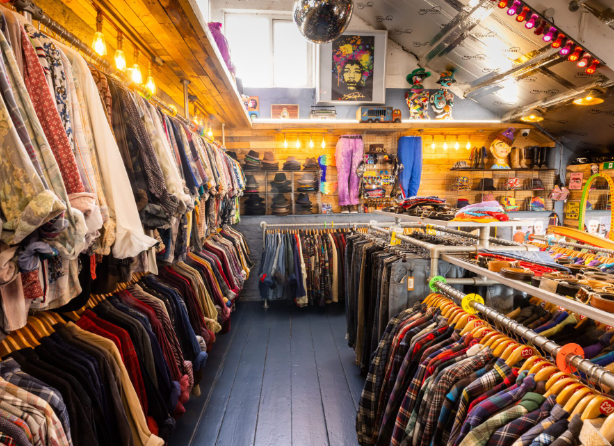
“Vintage Clothes” has made a remarkable resurgence in fashion, celebrated for its unique styles, superior craftsmanship, and sustainable appeal. Whether you’re a seasoned collector or new to the vintage scene, understanding how to find, style, and care for vintage clothes can enhance your wardrobe and appreciation for fashion history.
What is Vintage Clothing?
-
Definition:
- Vintage clothing refers to garments from a previous era, typically more than 20 years old. Items from the 1920s to the early 2000s can be considered vintage.
-
Why Vintage?
- Unique Style: Vintage pieces often feature distinctive designs and patterns not found in contemporary fashion.
- Quality Craftsmanship: Many vintage items are made with superior materials and attention to detail.
- Sustainability: Buying vintage reduces waste and promotes recycling, making it an eco-friendly fashion choice.
Finding Vintage Clothing:
-
Thrift Stores and Charity Shops:
- Often have a diverse selection of vintage items at affordable prices.
- Requires patience and frequent visits to find high-quality pieces.
-
Vintage Boutiques:
- Curated collections with a focus on authenticity and quality.
- Higher prices but often more reliable in terms of garment condition and authenticity.
-
Online Marketplaces:
- Platforms like Etsy, eBay, and Depop offer a wide range of vintage clothing.
- Check seller reviews and product descriptions carefully to ensure quality and authenticity.
-
Estate Sales and Auctions:
- Potential to find rare and valuable items.
- Research upcoming sales and attend auctions for the best selections.
-
Flea Markets and Antique Fairs:
- Great for discovering unique pieces and negotiating prices.
- Be prepared to search through many items to find hidden gems.
Styling Vintage Clothing:
-
Mix and Match:
- Combine vintage pieces with modern clothing to create a balanced and contemporary look.
- Example: Pair a vintage blouse with modern jeans or a vintage skirt with a trendy top.
-
Accessorize:
- Use accessories to highlight your vintage pieces. Think vintage hats, jewelry, and bags.
- Statement accessories can transform a simple outfit into a stylish ensemble.
-
Understand Era Styles:
- Research fashion trends from different eras to understand how to style pieces authentically.
- Incorporate signature looks from specific decades, like the flapper dresses of the 1920s or the bold prints of the 1970s.
-
Tailoring:
- Vintage sizes can differ from modern sizes. Tailoring ensures a perfect fit and breathes new life into old garments.
- A well-fitted vintage piece can look more modern and flattering.
Caring for Vintage Clothing:
-
Proper Storage:
- Store in a cool, dry place away from direct sunlight to prevent fading and deterioration.
- Use padded hangers for delicate fabrics and acid-free tissue paper for folding.
-
Gentle Cleaning:
- Hand wash delicate items using mild detergent or take them to a professional cleaner specializing in vintage garments.
- Avoid harsh chemicals and high temperatures that can damage fabrics.
-
Repair and Maintenance:
- Regularly check for and repair loose seams, missing buttons, and other minor damages.
- Preservation techniques, such as using mothballs or cedar blocks, can prevent damage from pests.
Conclusion: Vintage clothing offers a unique opportunity to express personal style while embracing the charm and quality of past eras. By knowing where to find vintage pieces, how to style them, and how to care for them, you can build a timeless and sustainable wardrobe. Whether you’re drawn to the elegance of the 1940s or the boldness of the 1980s, vintage fashion has something to offer every style enthusiast.





